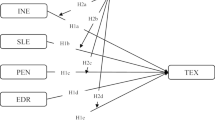Abstract
This study focuses on comprehensive partnerships between K–12 schools and postsecondary institutions which were created to improve the precollege academic preparation, college enrollment, and postsecondary success of minority and disadvantaged students. The study identified those partnerships that had been in existence in the United States for more than five years and surveyed them utilizing a 12-item questionnaire designed to determine the following: (1) structural characteristics; (2) funding; (3) success in achieving their goals and objectives; and (4) data collected to measure success.
During the course of study, key informants from each partnership were surveyed. Partnership research has been scant, in part due to the fact that school-college partnerships of this type are a fairly new development in education. The results of the surveys have contributed new information to the field on the characteristics of partnerships. Findings also indicated that a majority of these partnerships incorporated some of the important characteristics for success recommended in the available literature. The partnerships consider themselves to be at least somewhat successful in achieving their goals of improving high school preparation and college enrollments for minority and disadvantaged students. They are, however, less informed about the success of their participants in college, especially college retention and graduation. They are also less informed about the availability of financial resources for their college aspirants and appear only marginally committed to creating institutional change.
Similar content being viewed by others
REFERENCES
American Association for Higher Education (AAHE) (1991). Improving school achievement through partnerships. Washington, DC: AAHE.
American Council on Education (ACE). (1989). Minorities on campus: A handbook for enhancing diversity. Washington, DC: ACE.
Baird, A. C., and Porter, O. F. (1991). Partners in education: A directory of partnerships between independent colleges and universities and America's schools. Washington, DC: National Institute of Independent Colleges and Universities.
Carter, D., and Wilson, R. (1995). Minorities in higher education: 13th annual status report. Washington, DC: American Council on Education
Freeman, F. (1992). Power in the pipeline: A new wave of multicultural partnerships. Washington, DC: Association of Governing Boards of Universities and Colleges.
Galligani, D. J. (1990). Effective relationships for school/college partnerships 1984–1987 and Achieving academic excellence through school/college partnerships 1987–1990. Long Beach: California Academic Partnership Program.
Gifford, B. R. (1986). Images, recommendations, and best next steps. Education and Urban Society, 19(4), 421–440.
Gomez, M. N., Bissell, J., Danziger, L., and Casselman, R. (1990). To advance learning: A handbook on developing K-12 postsecondary partnerships. Lanham, MD: University Press of America.
Greenberg, A. R. (1991). High school college partnerships: Conceptual models, programs and issues (ASHE-ERIC Higher Education Report 5). George Washington University, School of Education and Human Development, Washington, DC.
Gross, T. L. (1989). Partners in education. San Francisco: Jossey-Bass.
Haycock, K. (1996). Thinking differently about school reform: College and university leadership for the big changes we need. Changes, 28(1), 13–18.
Hodgkinson, H. (1985). All one system. Washington, DC: Institute for Educational Leadership.
Levine, A. (1989). Shaping higher education's future: Demographic realities and opportunities 1990–2000 (1st ed.). San Francisco: Jossey-Bass.
Levine, A., and Nidiffer, J. (1996). Beating the odds: How the poor get to college. San Francisco: Jossey-Bass.
McMullan, B. J., Garrett, C. S., Sidler, J., Watts, M., and Wolf, W. C. (1992). A shared responsibility: College/school partnerships serving minority youth (Evaluative report). Center for Assessment and Policy Development, Bala Cynwyd, PA.
Mingle, J. R., and Rodriguez, E. M. (Eds.). (1990). Building coalitions for minority success: A report of the SHEEO project on minority achievement in higher education. Denver: SHEEO.
Noel, L., Levitz, R., Saluir, D., and Associates. (1985). Increasing student retention: Effective programs and practices for reducing the dropout rate. San Francisco: Jossey-Bass.
Odell, M., and Mock, J. J. (Eds.). (1989). A crucial agenda: Making colleges and universities work better for minority students. Boulder, CO: WICHE.
Orfield, G. (1992). Money, equity, and college access. Harvard Educational Review, 62(3), 337–372.
Otterbourg, S., and Adams, D. (Eds.). (1990). Partnerships in education: Measuring their success. Largo, FL: Infomedia.
President's Commission on Higher Education. (1947). Higher education for American democracy (Vols. 1 and 2). New York: Harper and Brothers, Harper Collins.
Richard, R. C., and Skinner, E. F. (1991). Achieving quality and diversity: Universities in a multicultural society. New York: Macmillan.
Richardson, R. C., and Bender, L. W. (1987). Fostering minority access and achievement in higher education: The role of urban community colleges and universities. San Francisco: Jossey-Bass.
Sirotnik, K. A., and Goodlad, J. I. (1988). School university partnerships in action: Concepts, cases and concerns. New York: Teachers College Press.
Stoel, C., Togneri, W., and Brown, P. (1992). What works: School/college partnerships to improve poor and minority student achievement. Washington, DC: America
U.S. Bureau of the Census. (1994). Current population survey. Washington, DC: U.S. Government Printing Office.
U.S. Bureau of the Census. (1995). Statistical abstract of the United States. Washington, DC: U.S. Government Printing Office.
Van de Water, G. B. (1989). The governance of school-college collaboratives: Lessons learned from the EQ models program. New York: College Board.
White, J. A., and Wehlage, G. (1995). Community collaboration: If it is such a good idea, why is it so hard to do? Educational Evaluation and Policy Analysis, 17(1), 23–38.
Wilbur, F. P., and Lambert, L. M. (1991). Linking America's schools and colleges: Guide to partnerships and national directory. Washington, DC: American Association for Higher Education.
Wilbur, F. P., and Lambert, L. M. (1995). Linking America's schools and colleges: Guide to partnerships and national directory (2nd ed.). Bolton, MA: Anker.
Wilbur, F. P., Lambert, L. M., and Young, M. J. (1988). School-college partnerships: A look at the major national models. Reston, VA: National Association of Secondary School Principals.
Author information
Authors and Affiliations
Rights and permissions
About this article
Cite this article
Laguardia, A. A Survey of School/College Partnerships for Minority and Disadvantaged Students. The Urban Review 30, 167–186 (1998). https://doi.org/10.1023/A:1023206128865
Issue Date:
DOI: https://doi.org/10.1023/A:1023206128865




